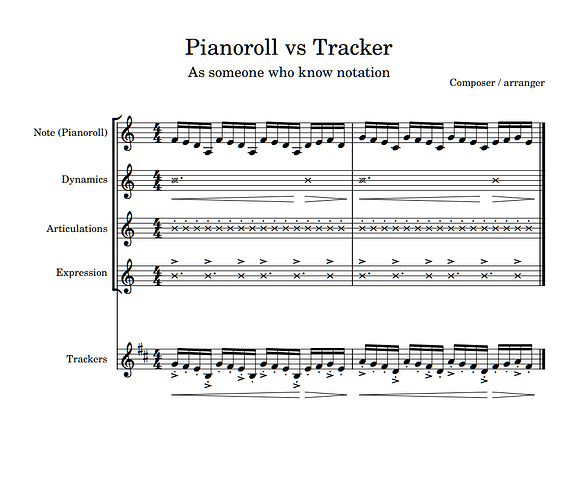I’m one of those eternally torn Logic/Renoise users, now seriously considering switching back to Renoise full-time. (Okay, maybe not 100% — I still need audio tracks, but you get the idea.)
It makes me wonder:
How do people actually put feeling into their music these days?
I’m not talking about vocals or live acoustic instruments, but things like basslines, synth leads, layered pads… all the subtle stuff. ![]()
When it comes to note glide, vibrato, precise timing — I haven’t seen anything that rivals Renoise. Maybe there are alternatives, but they sure aren’t easy to use. Don’t get me started on MIDI. (Unless you’re amazing at live playing you would love the MIDI Seaboard keyboard).
Sure, there are tons of things I wish Renoise had. But in the end, I keep coming back to what really matters in music: expression.
That’s what Renoise gives me.
Personally, I still miss ReWire — and I really hope Renoise adds solid Ableton Link support (transport sync etc). Redux also has its problems. And Logic’s handling of program changes? I still don’t understand some things… ![]()
For what it’s worth, I even started developing my own AU plug-in — a minimalist tracker-style sequencer. With AI in the mix, it might actually be done within a couple of years. ![]() I’m happy to share more about that if anyone’s curious — and hey, I’ll even throw in some free ideas for the Renoise devs while I’m at it.
I’m happy to share more about that if anyone’s curious — and hey, I’ll even throw in some free ideas for the Renoise devs while I’m at it.
I know, I probably don’t sound like the happiest Renoise user… But really, I’m just hard to please in general — no hard feelings! I am an optimist. Until the glorious days I’m bouncing between the two DAWs, when necessary, and having fun along the way.
Anyone else made a return to Renoise after years with another DAW?
